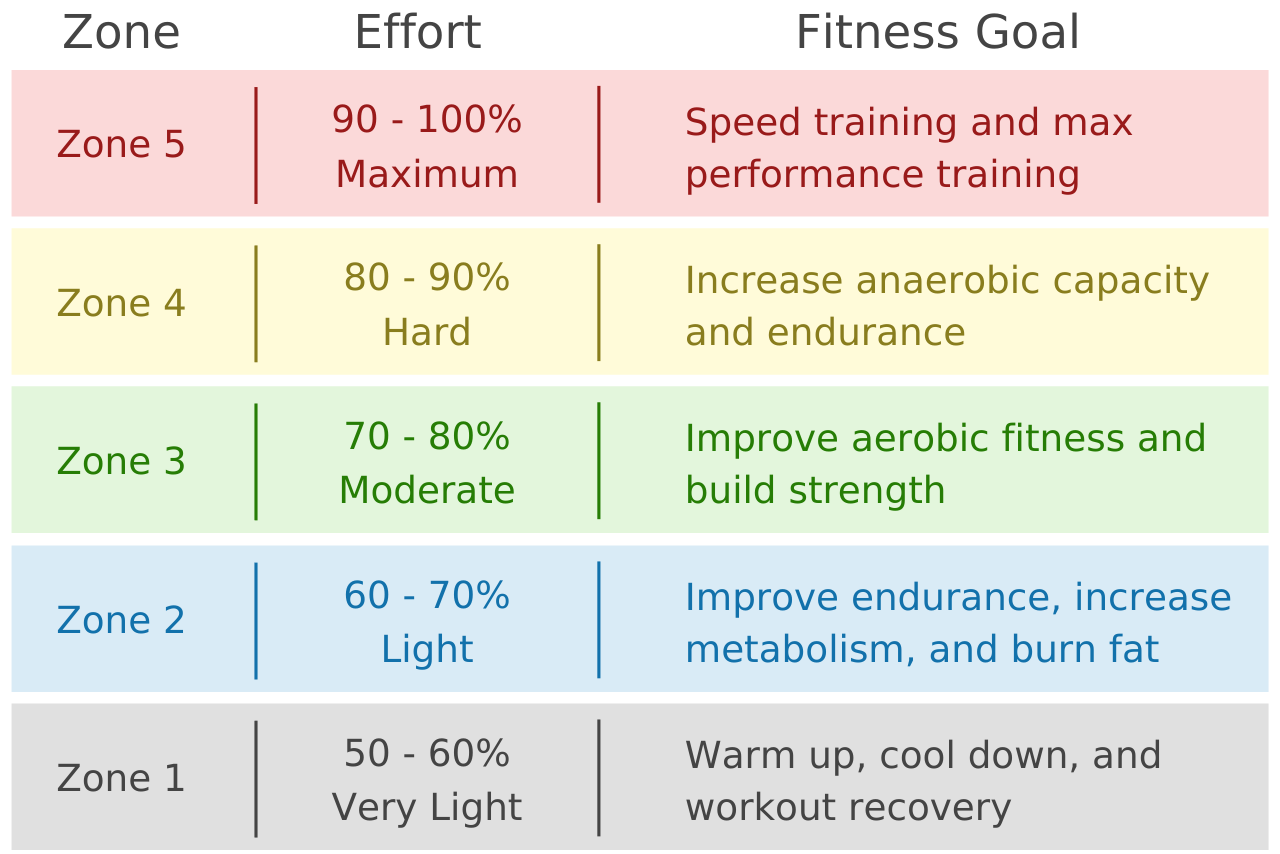
Understanding Heart Zones and How to Use a Heart Zones Calculator
Your heart rate is an essential indicator of your overall health and fitness. By understanding and monitoring your heart rate, you can tailor your exercise routine to achieve specific fitness goals, such as improving cardiovascular endurance, burning fat, or enhancing athletic performance. Heart zones are a valuable concept in this regard, and using a heart zones calculator can help you optimize your workouts. In this article, we will explore the different heart zones and provide a comprehensive guide on how to use a heart zones calculator effectively.
What Are Heart Zones?
Heart zones are specific ranges of heart rates that correspond to different levels of exercise intensity. These zones are based on a percentage of your maximum heart rate, which is the maximum number of heartbeats per minute your heart can achieve during physical activity. The concept of heart zones allows you to target and monitor different training intensities for different fitness goals.
The five primary heart zones are typically defined as follows:
- Zone 1 (50-60% of Maximum Heart Rate): This zone represents very light exercise and is ideal for warm-ups and cool-downs. It helps improve cardiovascular health and is suitable for beginners.
- Zone 2 (60-70% of Maximum Heart Rate): In this zone, you are in a comfortable aerobic range. It’s excellent for fat burning and building endurance. This is where most fitness enthusiasts aim to spend the majority of their workout time.
- Zone 3 (70-80% of Maximum Heart Rate): This zone represents moderate exercise intensity. It is suitable for improving cardiovascular fitness and increasing your exercise capacity.
- Zone 4 (80-90% of Maximum Heart Rate): In this zone, you are working at a high intensity. It’s ideal for improving anaerobic endurance and speed. This zone is often used in interval training.
- Zone 5 (90-100% of Maximum Heart Rate): The highest intensity zone, Zone 5 is suitable for maximum efforts, such as sprinting or high-intensity interval training (HIIT).
Benefits of Training in Heart Zones
Training in specific heart zones offers various benefits, and using a heart zones calculator can help you achieve your fitness goals more effectively. Here are some advantages of training in different heart zones:
- Improved Cardiovascular Health: Working out in lower heart zones (Zones 1 and 2) enhances cardiovascular health, reduces the risk of heart disease, and improves overall fitness.
- Fat Burning: Training in Zone 2 is ideal for fat burning. Exercising in this zone helps your body use fat as an energy source, promoting weight loss.
- Endurance Building: Zone 3 training enhances your exercise capacity and stamina, making it easier to perform longer workouts.
- Speed and Power Development: High-intensity training in Zones 4 and 5 can improve anaerobic capacity, speed, and power.
- Goal-Specific Training: Heart zones allow you to tailor your workouts to specific fitness goals. Whether it’s improving endurance, losing weight, or increasing speed, you can adjust your training accordingly.
Using a Heart Zones Calculator
A heart zones calculator is a valuable tool for determining your heart rate zones accurately. To effectively use a heart zones calculator, follow these steps:
1. Calculate Your Maximum Heart Rate (MHR)
Your MHR is an essential component in determining your heart rate zones. You can estimate your MHR using the age-predicted maximum heart rate formula:
MHR = 220 – Your Age
Keep in mind that this is a general estimate, and individual variations may apply.
2. Define Your Training Goals
Before using a heart zones calculator, clearly define your training goals. Are you aiming to improve endurance, burn fat, or increase speed and power? Knowing your objectives will help you select the appropriate heart zones for your workouts.
3. Input Your MHR into the Calculator
Access a reliable heart zones calculator or fitness app that allows you to input your MHR. Many fitness trackers and apps offer this feature. Enter your MHR to generate your heart rate zones.
4. Determine Your Heart Zones
The calculator will provide you with the heart rate ranges for each zone based on your MHR. These zones will be defined as a percentage of your MHR, as discussed earlier (e.g., Zone 2 corresponds to 60-70% of your MHR).
5. Monitor Your Heart Rate
During your workouts, use a heart rate monitor or fitness tracker to measure and track your heart rate. Ensure that your heart rate falls within the desired zone for your specific training goal.
6. Adjust Your Training Intensity
Depending on your training goal and the heart zone you want to target, adjust the intensity of your workouts. For example, if you’re aiming to burn fat, spend more time in Zone 2 during your aerobic exercises.
Additional Tips for Effective Heart Zone Training
To make the most of heart zone training, consider these additional tips:
- Consistency: Consistency is key in achieving fitness goals. Stick to a regular workout routine that incorporates heart zone training.
- Variety: Mix up your workouts to target different heart zones. Include aerobic workouts, interval training, and high-intensity workouts for a well-rounded fitness plan.
- Rest and Recovery: Allow your body time to rest and recover. Overtraining can lead to injury and burnout.
- Nutrition: A balanced diet is essential to support your training efforts. Ensure you’re consuming the right nutrients to fuel your workouts.
- Consult a Professional: If you’re new to heart zone training or have specific health concerns, consult a fitness professional or healthcare provider for guidance.
The Bottom Line
Heart zones are a valuable tool for optimizing your workouts and achieving your fitness goals. Using a heart zones calculator can help you determine the appropriate heart rate ranges for your specific objectives. Whether you’re looking to improve cardiovascular health, burn fat, or increase your speed and power, heart zone training provides a structured and effective approach to fitness and overall well-being.



3 thoughts on “Understanding Heart Zones and How to Use a Heart Zones Calculator”